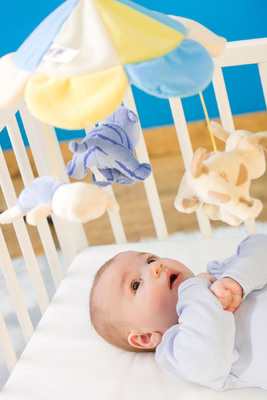- MENU
- HOME
- SEARCH
- WORLD
- MAIN
- AFRICA
- ASIA
- BALKANS
- EUROPE
- LATIN AMERICA
- MIDDLE EAST
- United Kingdom
- United States
- Argentina
- Australia
- Austria
- Benelux
- Brazil
- Canada
- China
- France
- Germany
- Greece
- Hungary
- India
- Indonesia
- Ireland
- Israel
- Italy
- Japan
- Korea
- Mexico
- New Zealand
- Pakistan
- Philippines
- Poland
- Russia
- South Africa
- Spain
- Taiwan
- Turkey
- USA
- BUSINESS
- WEALTH
- STOCKS
- TECH
- HEALTH
- LIFESTYLE
- ENTERTAINMENT
- SPORTS
- RSS
- iHaveNet.com: Health
Cara Smusiak

Babies are a wonder.
They soak up their surroundings from the moment they enter the world, and their curious nature means parents have to always be thinking about safety.
When parents think about safety in the nursery, they tend to think about falls from changing tables, baby getting sandwiched between the rails and mattress, or an infant getting caught up in cords. But the materials used in a nursery can carry a lot of chemicals that are harmful to a child's health.
Painting the nursery is one of those things expectant moms and dads have come to cherish. It's usually the first stamp on your home that a baby is on the way, but while you're dreaming of animal murals or circus stripes, you'll want to carefully choose a paint that contains no or only low levels of volatile organic compounds (VOCs). Some VOCs are extremely toxic, so caution is always best.
Low-VOC paints have been the talk of the town the past few years, but newer products contain no VOCs, and this is what you really want for your baby's nest.
Expectant moms who want to paint the nursery should only use VOC-free formulas, and if you can't find one or can't squeeze the extra cost into your budget, choose a low-VOC paint and let dad do the work.
After the walls are painted that perfect shade of sunny yellow, many parents start to think about flooring.
Carpeting may sound perfect for a cozy nursery, but it's not always the healthiest option. Most carpeting is made with synthetic materials--often petrochemicals--and there are a variety of hazards that can be introduced in your baby's space via the carpet.
The backing, adhesives, carpet fibers, and dyes in a carpet can contain VOCs and other toxic materials. According to the
All carpets should be installed well before your baby takes up residence in your home (or in the nursery, at the very least). When the carpet is installed, open windows to vent fumes, then leave the door to the room closed for at least three days.
When purchasing carpeting, be sure to look for options that feature non-toxic dyes and are low in VOCs. You might also consider manufacturing practices, choosing a product that is made with recycled content, was manufactured with renewable energy, and can be recycled.
Carpets also harbor pathogens such as bacteria, so a wood floor may be a healthier option all around. If you're opting for a wood floor, skip laminate, which can contain many chemicals in the glues. Keep in mind that wood stains can generate toxic fumes, so babies and pregnant women should stay away from home until you're sure VOC levels are very low.
Nursery furniture is the next logical step, and there can be some not-so-healthy surprises in store. Many wood products are made with formaldehyde, a chemical that, according to the
Advocacy organization Environment California released a report in 2008 that found six of the 21 baby furniture products they tested emitted "high levels" of formaldehyde. What's more, "several brands of cribs and changing tables emit formaldehyde at levels linked with increased risk of developing allergies or asthma," the report stated.
Formaldehyde-free furniture--from cribs and changing tables to rocking chairs and shelving--has a higher price tag but it may well be worth it.
Your child will spend many hours in his or her nursery. Making it a safe and comforting space will help you and your baby sleep easy.
© Naturally Savvy
AGING | ALTERNATIVE | AILMENTS | DRUGS | FITNESS | GENETICS | CHILDREN'S | MEN'S | WOMEN'S
Children's Health - How to Green Your Baby's Nursery